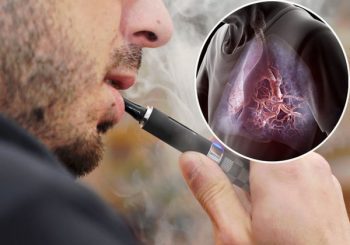By Marco Torres
Guest writer for Wake Up World
The history of tobacco use has been plagued with misinformation in both scientific literature and mainstream publications. A large majority of studies that have cast a negative light on tobacco have examined cigarette smoke which contains thousands of harmful chemicals. However, tobacco was used medicinally for thousands of years. A new study illustrates how vaping has been shown to reduce carcinogens by almost 98 percent in former smokers who dropped their cigarette habit and switched to vaporizers.
Tobacco is an annual plant belonging to the eggplant family. It’s cultivation can be traced back earlier over 8000 years ago. It enjoyed widespread medicinal use from the beginning of the 16th century to the end of the 19th century. According to two privately printed monographs, the beneficial uses of tobacco were almost endless.
[pro_ad_display_adzone id=”110028″]
Between 1537 and 1559, books published in Europe and Mexico commonly referred to the medicinal uses of tobacco among the indigenous populations of the New World, with eyewitness accounts of its therapeutic application in general bodily ills, catarrh, colds, and fevers, as an aid to digestion and in prevention of hunger and thirst, as a purgative and as a narcotic. During the sixteenth century, numerous herbs used in medicine had similar properties to tobacco and there were few ailments for which tobacco was not prescribed.
Even in the twentieth century, the therapeutic use of tobacco did not completely lapse. For example, in 1924, a salve made of burned tobacco leaves mixed with lanolin was said to be dessicant, stimulant and antiseptic for pruritus, ringworm, athlete’s foot, superficial ulcers and wounds In 1926, studies showed that patients with post-encephalitic parkinsonism were treated with subcutaneous injections of nicotine, nine showed immediate improvement in muscular movement.
Tobacco has long been removed from pharmacopoeias and from medical practice, especially after it was found the leaves and juice could be used for cancers and skin disorders that could be matched to medications. This gave an incentive for pharmaceutical manufacturers to influence doctors and switch to drug-based treatments.
Tobacco and Nicotine are Not The Problem
Lung cancer was once a very rare disease, so rare that doctors took special notice when confronted with a case, thinking it a once-in-a-lifetime oddity. Tobacco and nicotine were certainly not the problem because we have a history of use with no lung cancer for hundreds of years.
After the isolation of nicotine from tobacco leaves, the medical world became more mistrustful of tobacco as a general treatment, now aware that the plant was being combined with manmade chemicals in cigarettes. Mechanisation and mass marketing towards the end of the 19th century popularised the cigarette habit, however, causing a global lung cancer epidemic.
Cigarettes were recognised as the cause of the epidemic in the 1940s and 1950s, with the confluence of studies from epidemiology, animal experiments, cellular pathology and chemical analytics. Cigarette manufacturers disputed this evidence, as part of an orchestrated conspiracy to salvage cigarette sales. Propagandising the public proved successful, judging from secret tobacco industry measurements of the impact of denialist propaganda.
As late as 1960 only one-third of all US doctors believed that the case against cigarettes had been established. The cigarette is the deadliest artefact in the history of human civilisation. Cigarettes cause about 1 lung cancer death per 3 or 4 million smoked, which explains why the scale of the epidemic is so large today. Cigarettes cause about 1.5 million deaths from lung cancer per year, a number that will rise to nearly 2 million per year by the 2020s or 2030s, even if consumption rates decline in the interim.
“We have always known that tobacco is not the problem,” said Margalis Eichmann, Director of The Coalition Against Lung Cancer. She further stated that tobacco smoke could be as harmless as cannabis smoke if we learned how to vaporize it.
Vaping Makes A Difference
Once upon a time, an American man by the name of Herbert Gilbert invented the first ever smokeless non-tobacco cigarette. The idea was to replace burning paper and tobacco with flavored steam, or vapor, that contains nicotine. It wasn’t until 2003 that this product actually hit the market thanks to a man by the name of Hon Lik from China who was able to successfully market the product.
Since then, health enthusiasts have claimed vaping is far more effective to extract the medicinal properities of plants such as tobacco and cannabis. It’s more affordable, cleaner, healthier and with far less risks.
The only notable study that tried to paint a scary picture of vaping was published in the New England Journal of Medicine, back in early 2015. The study showed that when someone vapes at very high temperatures, a chemical called Formaldehyde — a known carcinogen which is actually a degradation product of propylene glycol — can be produced and inhaled. BUT this only happens with e-liquids. There are no known risks at all from those who vaporize pure herbs.
One main factor would be tar in combusting a plant is tar. There is none present in vapor whereas smoking anything will produce a thick and toxic byproduct. If you blow cigarette smoke out on a napkin it will turn yellow instantly however with vapor it will remain white. This gives us an idea as to what it may be doing to the inside of our lungs.
Cigarette smoke contains over 4,000 chemicals, including 43 known cancer-causing (carcinogenic) compounds and 400 other toxins. This includes nicotine, tar, and carbon monoxide, as well as formaldehyde, ammonia, hydrogen cyanide, arsenic, DDT among many others. Vaping contains the pure vapor of the plant and since the technology is either convection or conduction, plants are heated gently and slowly extracted with every inhale.
“Less than half of current smokers in the UK believe that e-cigarettes are less harmful,” says Lion Shahab, at University College London. His team has screened urine and saliva samples from 181 people, looking for chemicals known to be linked to cancer. “What we found is that using e-cigarettes alone results in very low exposure to toxins and carcinogens,” said Shahab.
Compared with people who were currently smokers, the team found that former smokers who had been vaping only, for six months or more, had very low levels of some of the worst carcinogens found in tobacco smoke. NNAL, a chemical heavily linked to lung cancer, was 97.5 per cent lower in former smokers who now only vaped, compared with the average smoker.
A number of other carcinogens, including acrylonitrile, butadiene, and acrolein, were all much lower in the vapers. Former smokers who had switched to long-term use of nicotine patches or gums also had lower levels of carcinogens.
The researchers said the findings provided strong reassurance that vaping is safer than smoking. “I would bet my house on e-cigarettes being substantially safer than smoking,” said Robert West, another of the researchers from University College London.
“This paper adds to the body of evidence that e-cigarette use is less harmful than smoking,” says Linda Bauld at the University of Stirling, UK, and a cancer prevention adviser to Cancer Research UK, which funded the study.
Article sources:
Recommended articles by Marco Torres:
- Why Do Governments Recommend This Toxic Food Today When They Didn’t a Decade Ago?
- Higher Levels of Flouride Consumption Linked to ADHD in Children
- 6 FDA-Approved Sweeteners Proven Toxic To Human Digestion
- Contrary to Common Belief, Marijuana Use Does Not Cause Mental Decline
- Study: The Most Harmful Addictive Drugs Worldwide are Alcohol and Tobacco
- The Endocannabinoid System and How THC Cures Cancer
- 10 Steps to Growing Cannabis Safely and Efficiently in Your Own Home
- Cannabis Significantly Reduces Depression, Anxiety, and Stress
- Study Shows The Therapeutic Effects of Marijuana on Autistic Children
- 5 Diseases Proven To Respond Better To Cannabis Than Prescription Drugs
- Another Reason Marijuana is Illegal: It Prevents the Spread of HIV
- Can Psilocybin Mushrooms Help Addicted Cocaine Users Stop?
- 10 Steps to Growing Cannabis Safely and Efficiently in Your Own Home
- Avoid 100 Dangerous Food Additives Causing ADHD, Asthma and Cancer
Marco Torres is a research specialist, writer and consumer advocate for healthy lifestyles. He holds degrees in Public Health and Environmental Science, and is a professional speaker on topics such as disease prevention, environmental toxins and health policy.
This article courtesy of Prevent Disease.
[pro_ad_display_adzone id=”110027″]







